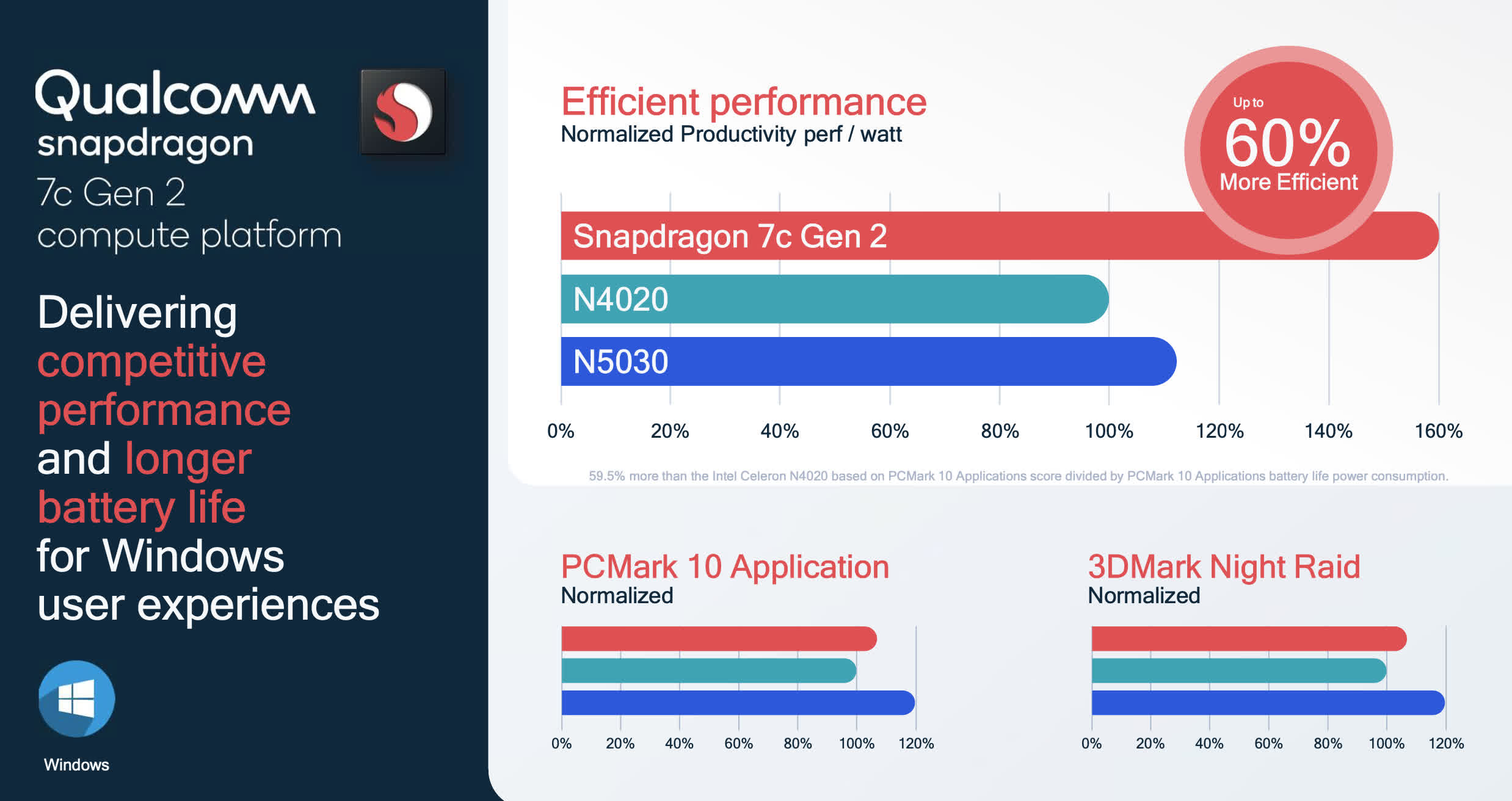The big picture: Qualcomm's new Snapdragon 7c Gen 2 chipset may not be in the same performance league as the Apple M1, but the devices it's meant for will be significantly less expensive than Apple's offerings. Developers will be able to get dev kits, so hopefully more apps will get ported to Windows 10 on ARM in the near future.
Today Qualcomm announced a new Arm-based compute platform called the Snapdragon 7c Gen 2 set to power low-end laptops in the sub-$350 price range. The name is reminiscent of the USB-C labeling nightmare, but the chipset itself is the perfect way to spur adoption for Chrome OS and Windows 10 on Arm devices.

The Snapdragon 7c Gen 2 is essentially an overclocked version of the original chipset released in 2019. It has two Kryo 468 (Cortex-A76) cores that run at up to 2.55 GHz and six lower power Cortex-A55 cores, paired with the Adreno 618 GPU, Hexagon 692 DSP, Spectra 255 ISP, and the Snapdragon X15 LTE modem. It won't offer the typical generational leap in performance, but Qualcomm squeezes more out of its Snapdragon 7c silicon while retaining battery-friendly energy efficiency.
It's worth noting that Qualcomm is comparing the Snapdragon 7c to the MediaTek MT8183 chipset and the Intel Celeron N4020 and N5030 processors. Performance should be comparable to these alternatives, but the company claims the Snapdragon 7c is up to 60 percent more efficient, enabling "multi-day" battery life for casual use or up to 19 hours of continuous use.

With the new chipset, Qualcomm hopes to entice manufacturers to use it in more designs after the first generation didn't quite capture their attention. The company says Lenovo will be the first to release a new device based on the Snapdragon 7c Gen 2 sometime later this year. With more people than ever working and studying from home, there's a lot of demand for clamshell devices that don't break the bank. After all, Chromebooks have benefitted the most from this shift in consumer behavior.
Developers interested in creating or porting apps to Windows 10 on ARM can now get their hands on a Snapdragon development kit that should start shipping this summer. Pricing and a precise release date will be announced at Microsoft's Build event later this week. Who knows? Maybe we'll even see Microsoft announce some much-needed QoS optimizations like those implemented by Apple in macOS Big Sur for M1-based Macs.
https://www.techspot.com/news/89799-qualcomm-snapdragon-7c-gen-2-power-entry-level.html